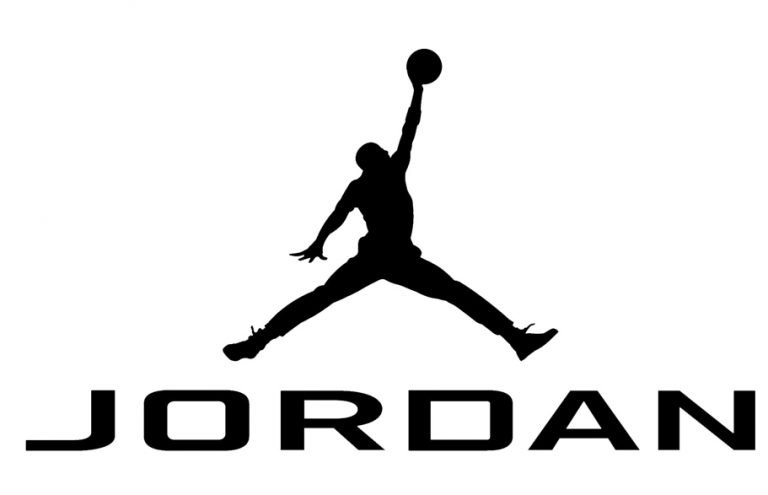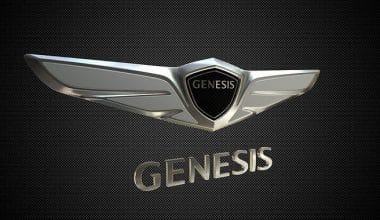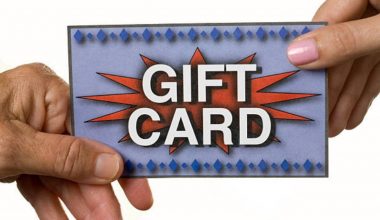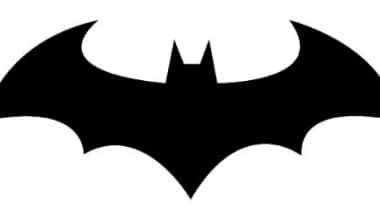The partnership between Nike and basketball legend Michael Jordan, commemorated by the Jordan logo, dates back to 1984. One of the most recognizable logos in sports today is the Air Jordan logo, also known as the “Jumpman” logo.
The Jordan brand logo stands out from the crowd because it is both unique and intricate compared to the logos of other popular sports companies.
Many people now associate this style with excellence because they believe Michael Jordan would approve.
So, whether you’re an avid collector of Air Jordans or have just always been curious about the Jordan brand, you’re in for a real treat. This article will examine the evolution of the Micheal Jordan logo and how it came to be one of the most recognizable symbols in the world.
What was the first Jordan shoe with the Jumpman logo?
Tinker Hatfield introduced the Air Jordan III, the first Jordan sneaker to feature the “Jumpman” logo, in 1988. Since then, the same emblem has appeared on a variety of models, all the way up to 2018.
Nike created Air Jordan specifically to collaborate with basketball legend Michael Jordan. Today, the company manufactures a wide range of basketball products as well as sneakers, training shoes, and other athletic equipment.
While the Jordan logo first appeared in 1984 as a result of a contract signed by Phil Knight and Michael Jordan, the first sneakers with the logo did not appear until much later.
What Does the Air Jordan Logo Stand For?
The Air Jordan logo, also known as the “Jumpman,” depicts Michael Jordan leaping towards a basketball net in his custom Nike sneakers. The design is meant to resemble Michael Jordan, reminding us of his incredible skills and relationship with Nike.
How Did Michael Jordan Come Up With His Logo?
Though the exact story of how the silhouette for the Jumpman logo was chosen is unknown, some believe the image was captured during an iconic leap in one of his most difficult matches.
The image was created by photographing Michael Jordan from behind as he prepares to make an incredible shot.
Is the Nike Logo on Air Jordans?
The Nike logo appears on some Air Jordan trainers but not on all of the company’s shoes. The Air Jordan Retro 1 is one of the few retro Air Jordans with the Swoosh.
The company manufactures a variety of Air Jordans, each with its own design and branding approach.
The “Jumpman logo,” as Air Jordan fans affectionately refer to it, has helped the Air Jordan brand become one of the most iconic in history. The Michael Jordan silhouette was inspired by a Life magazine photo before Jordan signed with Nike.
Michael actually repeated his previous pose for a second photoshoot after signing a contract with Nike to create the Michael Jordan logo that everyone is familiar with. This time, Jordan was wearing the first pair of Air Jordans designed specifically for him.
Tinker Hatfield drew the iconic silhouette emblem in 1988, inspired by the photoshoot, and the first shoe with the logo debuted in 1988.
While the Jumpman logo was initially intended only for shoes or sports apparel, it eventually became a standard part of many Air Jordan products over the years.
Who Designed Michael Jordan’s Logo?
The Jumpman logo design was patented by Nike Inc. Nike is an American sportswear company that creates, develops, manufactures, and sells footwear, clothing, equipment, and accessories all over the world. Its headquarters can be found in Portland, Oregon.
Michael Jordan had a similar posture in a Life Magazine photo before the Jumpman emblem hit the sporting scene in 1988. The image depicts the gifted athlete in an Olympic jumpsuit soaring towards a basketball rim. He did a ballet jump movement.
Nike Inc.’s head of design, Peter Moore, discovered this stylized image of Michael Jordan. He and his design team were unable to use it due to copyright issues. As a result, they attempted to recreate other versions by drawing inspiration from that. They experimented with Jordan in Bulls gear.
Tinker Hatfield took over for Peter Moore when he left Nike. The Jumpman logo debuted in 1988. Tinker created the Jumpman signature Jordan emblem using some sketch concepts left behind by Peter Moore. It was more likable and easily recognized than the previous ones.
The Air Jordan III was the first Jordan shoe to feature the trademarked Jumpman logo. It took the place of the original wing logo on the Air Jordan I and II. Everyone, including Jordan, was blown away by the iconic designs of the shoes and logo.
Nike has several partnership agreements with elite athletes all over the world. Nike has endorsements with top athletes in sports ranging from basketball to tennis. Some examples include Carl Lewis, Ronaldinho, and Tiger Woods. Neymar Junior, James LeBron, and Cristiano Ronaldo are among the others.
History of the Air Jordan Logo
Unlike many athletic brand logos, the Jordan shoe logo hasn’t changed significantly over the years. Though the design has appeared in a variety of colors to suit various branding efforts and products, the image’s primary elements remain the same.
The Air Jordan logo depicts Michael Jordan leaping through the air with a basketball in one hand raised to the sky. The other arm is extended, fingers pointing in the direction of the viewer.
Looking at the hands, experts say you can tell the difference between the staged photo taken for Nike and the original photo depicting Michael’s jump. The fingers in the 1984 shot are slightly bent, whereas the hand in the 1985 shot is outstretched.
Almost immediately after introducing the Air Jordan symbol, the shoe brand with the Jumpman logo became an enormous success. The design, while simple, is easy to recognize, and it’s clear who the silhouette is meant to represent.
Notably, a version of the Air Jordan shoe logo includes a wordmark, but this extra element is uncommon. The wordmark is displayed in a simple sans-serif font with squared edges when it is present.
The Jordan wordmark is spaced to appear wide and broad, lending confidence to the brand. All of the characters are also in uppercase, emphasizing the brand’s strength.
What made Michael Jordan’s logo so Effective?
It is true that first impressions are important. At first glance, Michael Jordan’s logo exudes love. Mr. Tinker and his design team went above and beyond to make the trademark effective. Let’s take a look at what made the Jumpman so iconic and timeless as a group:
Design is Simple:
Aside from the player in flight, there are no intricate graphic elements. It’s so clear that even a child can identify it without hesitation. This is a powerful feature that distinguishes the best logo designs from the rest. The Jumpman logo, with its humble persona, is appealing.
Design is Consistent:
The more brands expose you to a specific ad over time, the more you remember it. That is an advertising fact. Since its inception around three decades ago, the trademark has changed little. It has remained true to its message and earned the devotion of its devoted fans.
Design is Versatile:
Logos that have been well-crafted are malleable. It means they can take various forms without deviating from their primary goals. The Jumpman logo can be any color and still be easily recognized. It can also connect with fans through all marketing mediums.
Design is Memorable:
The Jordan emblem’s minimalist design makes it difficult to overlook. The Jumpman is visible to millions of people regardless of whether it is red, white, or black. The abstract image’s stylized posture stands out from the crowd, making it timeless.
Michael Jordan Logo: Elements
Can a graphic artist create a trademark without using design elements? The answer is emphatically no! Visual elements are the soul of every creative work that has ever existed. As a result, their absence implies the end of all objects.
So, when creating the trademark for Michael Jordan, Mr. Tinker concentrated on a few key elements. He used a color palette, an abstract image of Michael Jordan in an iconic position, and no typography.
Michael Jordan Logo: Symbol and Shape
A Circle:
A rounded object appears in the famous Michael Jordan Jumpman logo symbol. In reality, the circle is a basket. It’s the official leather object for such competitions. The rounded shape can also be linked to the rim where basketball players attempted to score. A circular object also conveys a sense of community and unity. We can link it to game spectators, players, and managers.
A Jumping Man:
Jumpman was the nickname given to the iconic Jordan logo because of the jumping man’s pose. It is one of the most appealing design elements in the emblems. Clearly, it depicts Michael Jordan in action. The stylized posture has appeared on two occasions. The first featured him in a US Olympic uniform prior to the 1984 Summer Olympics. In 1985, he posed for a similar shot while dressed as a Chicago Bulls player and wearing Nike Sneakers.
The Stretched Legs:
The man in flight was balanced by his two stretched legs. They resemble the letter V when turned upside down. Michael Jordan’s career advancement is symbolized by the 22nd letter of the English alphabet. Jordan exhibited many characteristics associated with the letter V as a player. He was valuable, versatile, and relentless in his pursuit of victory. He was also a visionary athlete with vigilance and vigor.
Michael Jordan’s Logo Colors:
The Color Black:
One of the colors in the highly praised Jordan’s logo is black. It can appear as a background color or as part of the image itself. This is determined by the medium through which the company wishes to promote its product line. When there is no light, the color black occurs.
People’s moods are affected by black in both positive and negative ways. Some bright black tones are power, authority, and elegance. In contrast, it can represent fear, death, or evil. The Jumpman’s logo, on the other hand, used the color to convey leadership, formality, and strength.
The Color White:
The next neutral color you’ll notice on Jordan’s signature trademark is white. It, like black, can enhance either the image or the background. Both are strong, contrasting colors. Snow is associated with purity, humility, and simplicity.
It can also be used by brands to convey safety, cleanliness, and loyalty. To a large extent, the color white has a positive effect on our minds. It promotes newness, clarity, and strength renewal. However, too much of it in the eye can cause blurred vision.
The Color Red:
Red is one of the primary colors used in Jordan’s trademark. It’s all over the place! It resembles blood, ripe tomatoes, apples, and strawberries. Color experts use red to convey feelings of love, passion, and desire. They also use it to express bravery, vigor, and joy.
These are reds’ positive emotions. However, the color can have a negative impact on your mood. Rage, anger, and danger are examples. Others include rage, stress, and lust. Red is a powerful color for quickly capturing people’s attention.
Michael Jordan’s Logo Typography
Fonts play an important role in branding. They communicate the brand’s personality to stakeholders. However, the Jumpman logo lacks lettering. It is, after all, one of the few iconic symbols that has bent the rules in their favor. Perhaps the designer left out the name because he thought the athlete had a distinct personality. The charismatic vibe came after the trademark.
Does Jordan own the Jumpman logo?
No, the famous logo known as the “Jumpman” is owned by the Nike company, not Michael Jordan, despite the fact that his silhouette is depicted on it.
Michael Jordan’s Impact And Legacy
People were compelled to call you names that they thought reflected your ability because of your greatness. Jordan’s many fans couldn’t help but give him memorable nicknames. His outstanding performances on the court earned him recognition. You’re talking about a genius if you call him Mike or MJ.
Michael Jeffrey Jordan was born on February 17, 1963. James Jordan and Deloris Jordan welcomed a son in Brooklyn, New York. His siblings are Larry, Deloris, Roslyn, and James Junior. His mother worked as a bank teller and writer, and his father worked as an equipment manager.
In Wilmington, North Carolina, he attended Emsley A. Laney High School. At this point in his life, he demonstrated his love of sports—basketball, baseball, and football. His father influenced his interest in sports. In their backyard, he built a basketball court and taught him how to play baseball. In the summer of 1993, two teenagers murdered the father.
Jordan had an effect on Laney’s junior varsity team. He scored over 40 points for the team. In 1981, as a senior, MJ scored 30 points in the McDonald’s All-American Game. He received a basketball scholarship to the University of North Carolina the same year. He earned a Bachelor of Arts in geography in 1986.
Read Also: Fortnite Logo: Meaning, Evolution, History
Jordan’s professional career began in 1984, when he was drafted by the Chicago Bulls. He was selected third overall, behind Hakeem Olajuwon of the Houston Rockets and Sam Bowie of the Portland Trail Blazers. The draft included talented players such as John Stockton and Charles Barkley.
He made the most of his rookie season. He averaged 28.2 points per game for the Chicago Bulls on 51.5% shooting. His contribution aided the team’s advancement to the playoffs. They finished with a score of 38-44. He eventually won the NBA Rookie of the Year Award and was selected to play in the All-Star Game.
Michael Jordan had a bad second season. He broke his foot after only three games. As a result, he missed 64 games. His team, however, made the playoffs with a record of 30-52. It was the NBA’s worst record in history.
He recovered and returned even stronger. With 63 points in Game 2 against the Boston Celtics, he set an unbroken playoff record. On paper, most people considered the 1985-86 Celtics to be one of the best teams in NBA history.
Read Also: Adobe Logo: The Story Behind the Iconic Logo (Detailed History)
He had one of his best seasons in 1986-87, averaging 37.1 points on 48.2% shooting. This translated to over 3,000 points, putting him second only to Wilt Chamberlain in terms of incredible points. He also set NBA records with 200 steals and 100 blocked shots.
His contributions to the Bulls’ rise were phenomenal. The squad had become a winning team by the late 1980s. During the 1987-88 season, Jordan received his first MVP Award. He finished with 35.0 points per game on 53.5% shooting. It was the start of more honors.
Mike, the black Jesus, won his second MVP award in 1990-91. He averaged 31.5 points on 53.9% shooting in this setting. The Bulls finished first in their division for the first time in 16 years, with 61 wins during the regular season.
They advanced to the NBA Finals, where they defeated the Los Angeles Lakers in four games. Legendary Lakers players included Magic Johnson and James Worthy. The Bulls won the trophy, and Jordan was named NBA Finals MVP for the first time.
The Bulls found their stride in the league, and Jordan established himself as a household name. He was a member of the United States Olympic basketball team that won gold in 1984 and 1992. He has also won the NBA championship six times and been named NBA Finals MVP six times.
These are just a few of his outstanding contributions to basketball. He has retired three times: in 1993, 1998, and 2003. Throughout his 19-year professional career, he has earned nicknames such as Black Cat, His Airness, GOAT, and Air Jordan.
How much did Nike pay Michael Jordan?
As of the year 2020, Centuro Global estimates that Jordan has made $1.3 billion from his endorsement deal with Nike. According to Front Office Sports, Jordan was paid $256 million by Nike in 2022 alone. This figure more than doubles the total earnings he racked up during his entire NBA career in just one year of sneaker sales.
Does Michael Jordan still get paid by Nike?
According to reports, Michael Jordan receives a royalty rate of 5% on all sales of Jordan Brand products as part of his licensing agreement with Nike. Ben Affleck is the director of the film that is based on the partnership that existed between Michael Jordan and Nike.
Summary
MJ is one of the most decorated athletes in the history of the game. He is a man who enjoys challenges, as evidenced by his participation in football, baseball, and basketball. He now owns a majority stake in the Charlotte Hornets. With this investment, he became the first ex-NBA player to own a franchise in the league.
Nike, as a profit-driven company, would not have partnered with him if he wasn’t exceptionally talented. And the success of his Air Shoes proved that Nike made a wise decision. According to Forbes, Nike made $1 billion in sales from the Jordan brand in 2010.
Jordan rose to prominence due to his winning attitude, work ethic, and willingness to listen to advice. Again, his incredible performances on the court brought him success, which the club had not seen in a long time. Finally, the Jumpman logo has most effectively mirrored his professional career.
Related Articles
- RED BULL LOGO: Meaning, Font, Company and Owner
- 25 Best SNEAKER BRANDS in 2023: The Comprehensive List
- NIKE BLACK FRIDAY: Best Deals and Ad in 2023
- Celebrity Endorsements: Best Practices to get one
- CHICAGO BULLS LOGO: History, Evolutional Changes, Design Influences






